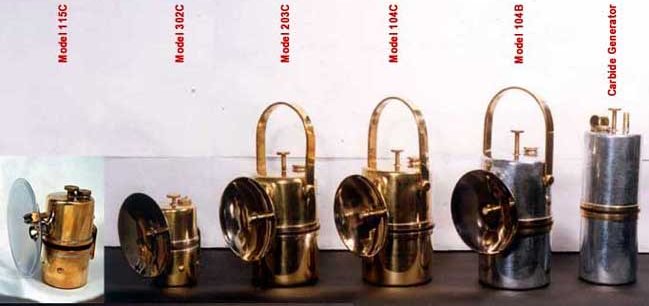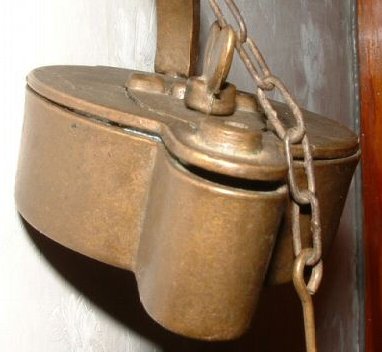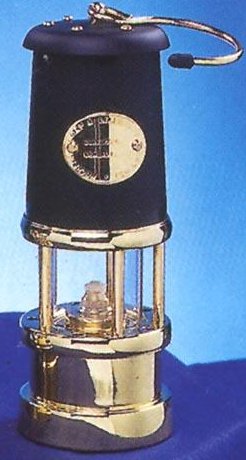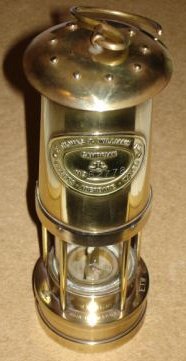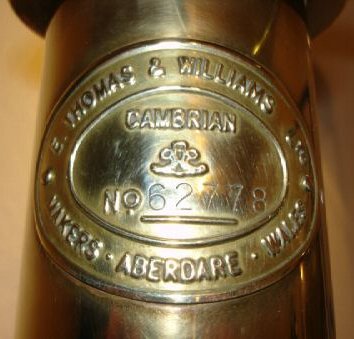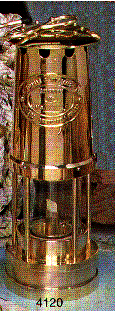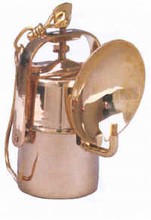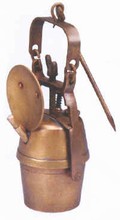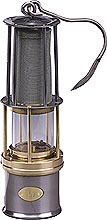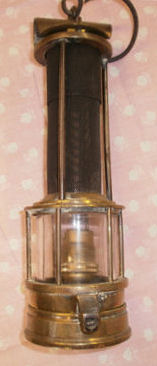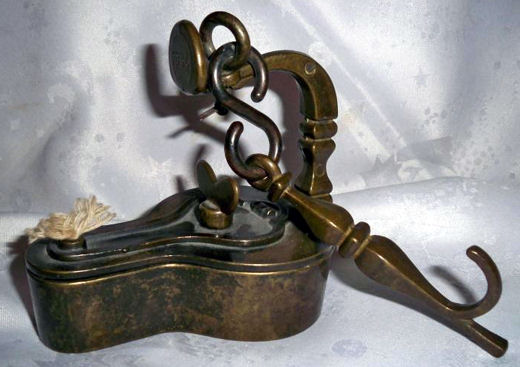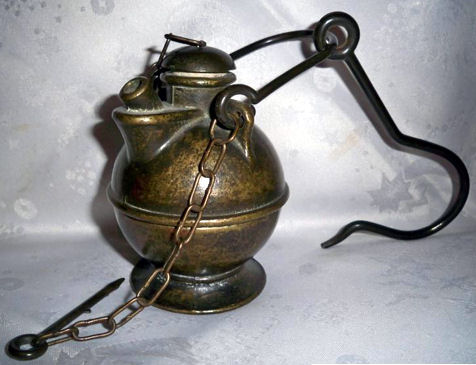Information on Collecting Mining Artifacts
Why Collect Mining Artifacts?
Mining artifacts are a tangible link to our distant and more recent industrial past. Without mining the Industrial Revolution and our modern Industrial Age would not have been possible. Without copper electricity could not be produced or distributed, without iron to make steel we would not have cars, trucks, trains, steel construction girders, steel cable, without bauxite to make aluminum, and other ores to produce other lightweight metals, we would not have airplanes, without uranium we would not have nuclear energy, and the list goes on. Much of the raw material used in our modern industrial society are produced by mining.
Actually mining dates back much further than most of us realize, pre-historic man mined flint nodules from clay deposits using picks made from deer antlers. The remains of these earliest mining operations have been found and studied by modern archeologists. As early as 10,000 years ago copper was being mined for use as tools, implements, weapons and ornaments. At some point man discovered that adding tin to copper made a metal that was harder than copper alone resulting in bronze taking the place of copper for most tools, implements and weapons until iron was discovered. Iron was much later supplanted by steel and other more exotic metals. Gold, silver and platinum have been important means of measuring wealth throughout man's history. It was coal that fueled the Industrial Revolution. All of these and other raw materials were and still are produced by mining.
Mining artifacts are a great complementary addition to any mineral collection. Without mining most mineral specimens would not have been available to collectors, so the tie between mineral collections and mining artifact collectors is strong. I personally collect both minerals and mining artifacts.
What is a Mining Artifact?
A mining artifact can be any item associated with mining. This would include tools, implements, and equipment, such as picks, hammers, hand drills, all types of underground blasting items, all types of mine lighting (candle, oil, carbide and electric), oil cadgers, carbide flasks, hats and helmets, instruments for underground surveying, anemometers, signs, as well as larger items such as hand crank and pneumatic drills, ore cars, ore buckets, stamping equipment, hoisting and pumping equipment. There is is also a myriad of associated items available to collectors, such as mining photos, stock certificates, scrip tokens and certificates, mining union items, various badges, pins, ribbons and fobs, safety awards, company checks brochures, letterhead and other documents, advertising, commemorative items, signs, statues, and the list goes on and on.
What to Collect and Why?
Collectors can decide to concentrate on a single item like carbide cap lamps or broaden their scope of interest to include more than one type of mine lighting. Some collectors concentrate their collecting on a single mine or mining company, a single mining town, mining district, mining region or mining state. Others concentrate on a particular type of mining such as coal vs hardrock mining, or break hardrock mining down further into gold, silver, copper, iron, lead, tin, etc. We can collect whatever interests us.
I collect because I enjoy the history associated with each artifact As I add to my collection, I enjoy researching each piece and placing it within its historical context. As a collector I feel the desire and need to preserve items that might otherwise be lost to future generations. I see myself as the caretaker of these artifacts until they are passed on to another collector to preserve for another generation before they too pass them on. The camaraderie of fellow collectors adds a great deal to the enjoyment of collecting. Collections are something that should be shared with others, not hidden away where no one else can see and appreciate them. Lastly, I enjoy the hunt for new artifacts to add to my collection,
Where Can I Find Mining Artifacts?
Mining artifacts can be found in a host of places. For the non-adventurous collector there are flea markets, antique shops, antique shows, auctions, and yard sales. For armchair bound collectors, who prefer to stay within the comforts of their own home, there is internet buying. Many antique dealers now have websites and some collectors have websites offering pieces for sale or trade. However, the largest on-line venue for collectors is eBay. If you go to Ebay and type in "mining", "miners", :mines, "mine" and "coal" you will get literally thousands of hits for items currently offered. If you want to avoid going through thousands of items you can be more discriminating and type such key word/words as "carbide lamp", "blasting cap tin" , "oilwick lamp", "safety lamp", "mining company", "mining stock", "scrip", "blasting", etc.
For the more adventurous collector there are still artifacts to be found around old mining sites, the more remote the better. Just remember that these sites are dangerous due to possible open shafts and decaying structures. For the truly adventurous collector there are old mines that can be explored for artifacts. Mine exploring should only be done by those experienced in underground exploring or if you are accompnied by others who are experienced. Remember that abandond mine sites will most likely be on private or government property. Where possible seek permission to enter the site and leave it like you found it, don't litter, deface or destroy anything at the site.
I personally have no qualms about anyone removing items from abandoned mines that would otherwise be lost. If collectors do not save these items for future generations they will be lost forever.
Tips on Collecting
Once you decide what you want to collect always buy the highest quality item that you can afford, both in rarity and condition. The problem with commonly found items are just that, they are common and easily obtained. Items in poor condition, that is dented, rusted, cracked, missing parts, crudely repaired, and/or modified have neither the value or collector interest that an all original mint condition piece would have. From an investment and ability to resell in the future standpoint, you are always better off buying the best condition mining artifact you can reasonably afford. Personally, I would rather have one very nice $1000 item than ten poor $100 items. The sweet taste of a lower price rapidly fades and gives rise to the lingering bitter taste experienced when you look at an item sitting on your shelf that is dented, rusted, missing parts, etc., you'll never be as happy with the poorer item as you will with the very nice item. In the same vein.
There are basically three factors that determine the value of a mining artifact: 1) condition, 2) rarity and 3) aesthetics/desirability. Any knowledgeable collector of any type of antique or collectible knows that a mint item has more value than one that is dented, rusted, cracked, chipped, scratched, missing parts, or has been crudely repaired or modified, mining artifacts are no exception. Some sellers actually try to make a virtue of these deficiencies by describing the item as having "character", don't be taken in by that line.
Rarity, desirability and aesthetics are all linked. To some collectors an item is desirable merely because it is rare. Others may find an item desirable because it is aethetically pleasing to them. They may like the look of a Lu-Mi-Num carbide cap lamp because it looks much different than the Arrow or Demon Strike Light which are very similar in design to the common run-of the-mill Guy's Dropper cap lamp. Some collectors consider an item to be desirable just because it is different than the norm. On the other hand, a lamp that is different looking or rare may not appeal to some collectors because they consider it "ugly", remember that beauty is in the eye of the beholder. Buy what appeals to you for whatever reason it appeals to you.
Things to Watch Out For
When buying mining artifacts, especially mine lamps, there are some things to watch out for. These include overall condition, wrong parts and missing parts. The photos below are all lamps that have been offered on ebay that depict different problems that may be encountered when buying lamps.
Common steel oilwick lamp badly dented and rusted, a lamp with very little value. A better example is easy for almost any collector to obtain.
Common steel oilwick lamp with rust pitting and poorly done old re-soldering job. A better example is easily obtainable.
A common Justrite handlamp with
a rusted reflector and missing the
water feed. Not a desirable lamp.
Unfortunately many nice safety lamps have been ruined by being electrified. This requires drilling a hole for the cord and removing the burner assembly, which is then thrown away. Fortunately, this example is no loss to collectors, it is a lamp of recent vintage..
A Taiyo carbide lamp of recent S.E. Asian manufacture with a missing reflector.
Common Autollite top on a beatup
copper Shanko carbide container.
The Shanko container is worth more than the lamp as a whole.
Dented Brilliant Searchlight carbide generator missing its water feed. This is only half the lamp, the hose and cap portion are missing.
Common Dewar ITP handlamp with rusted
top and damaged reflector. Better examples are readily available for not much money.
A decent looking Wolf dome top carbide lamp missing its reflector and brace. Many
carbide lamps had their original reflectors replaced with these large reflectors by coon hunters, and fishermen. An original reflector cannot be easily obtained.
A common Autolite carbide cap lamp with the original reflector replaced by an old Model T headlight reflector. A reflector for this common lamp would not be too difficult to obtain. However, a better idea is to purchase an all original lamp.
A very beatup base for an Autolite lamp. A common lamp in this condition is not worth buying at any price. A near mint example can be obtained quite readily for a very reasonable price
Top for a common Guy's Dropper lamp with numerous problems.
The reflector, reflector brace, and hook are missing, the water door and tank are dented, and worst of all, the threads are stress cracked from top to bottom. This piece is worthless as shown here.
Fred R. Belt Lu-Mi-Num carbide lamp with a badly rusted reflector. This reflector is not easily replaced.
Elkhorn carbide lamp missing its reflector brace and cap brace, and its hook has been shortened, not a desirable lamp in this condition.
The same Lu-Mi-Num lamp as above with a rust pitted
cap hook. The aluminum portion of the lamp is still in nice shape.
Common late-model Autolite cap lamp missing its reflector brace and the reflector is dented. The reflector can be replaced or the dent removed and reflector braces are available, better examples are available for little money.
Hansen cap lamp missing its water feed lever and reflector brace. The
reflector brace is an integral part of the cap brace and hook and would be almost impossible to replace..
While the remainder of the lamp is
in nice condition, the value of the lamp is seriously impacted.
Reproduction Lamps
The novice collector must be aware of all the reproduction and newly manufactured lamps being offered in the market today. These lamps come in many types and varieties, including carbide cap and handlamps, safety lamps, frog lamps, geisser lamps, blende lamps, candlesticks and oilwick lamps. Some are turned out by individuals and sold as original and some are mass produced by companies which sell them as new, but which are later offered on the market by individuals as old. Pictured below are some examples of these lamps.
While not a reproduction per se, the Safesport Butterfly
carbide cap lamp is a recent knock-off of the Guy's Dropper carbide cap lamp but of rather poor quality. These lamps were never used in mining
New safety lamps produced and sold by J.K. Dey of India, these are sold as new lamps.
J.K. Dey carbide cap and hand lamps sold as new.
Poorly made new British safety lamp
Poor quality new German Brass Frog Lamp. Notice the poor
workmanship, and that the wick pick is not sharpened as an original would be.
Same lamp as right, notice that there is no real hinge on the filler door as found on original lamps
The most telling feature of this repro lamp is the fact that the top of the fuel vessel is not sealed, the lamp would spill fuel as soon as it was picked up.
All brass flame safety lamp recently produced by E. Thomas & Williams in South Wales. This company has produced many models of safety lamps since the 1800s. Their new lamps should not be confused with the old original models that were actually used in mines.
Three models of E. Thomas & Williams safety lamps from their catalog.
1) All brass, 2) brass with steel bonnet, and 3) brass Davy style lamp
Five different recently produced miners' safety lamps available from Germany
Four different recently produced miners' safety lamps available from Germany
Recently produced Spherical oil lamp, Mansfeld Lamp and Westfalian Frog Lamp
Recently produced steel Frog Lamp, Brass Harz Frog Lamp and Canister Carbide Lamp
Recently produced Brass Carbide Lamp, Unbonneted Clanny and two Bonneted Clanny Safety Lamps
Some of these newly produced lamps shown here are quite well made and in time will be passed off as old original pieces by dealers and collectors, either knowingly or unknowingly, and some are already being sold as old original lamps. Reproduction lamps are generally of no interest or value to serious collectors.
REMEMBER: CAVEAT EMPTOR - LET THE BUYER BEWARE!
This Justrite cap lamp is beyond being restorable.
While complete, the integral reflector is badly dented and split, the water chamber is badly dented, the base is dented, but not as badly as the top. Only the water door and water feed lever appear to be intact. This is not a lamp worth saving.
This late-model Autolite cap lamp has too many problems to be collectable. The obvious major defect is the large dent in the water chamber. The hook has been poorly resoldered, the cap brace is missing, the striker is missing, and the base has several stress cracks.
Rust pitted steel oilwick cap lamp that has been sprayed with gold paint. The hook is especially heavily pitted. This is not a lamp that I would want in my collection.
Above you see photos of two of the candlesticks manufactured for the tourist trade, Unfortunately, these are now being offered on ebay as "old" or "vintage" miners' candleholders. They have been artificially aged to look old. Stay away from these unless you just want a repro stick.
To most colllectors, condition is of paramount importance in any mining artifact, followed closely by rarity. Rarity generally equates to desirability and value. I would rather have one mint condition rare lamp than 10 mediocre condition common lamps.
Henry Watson unbonneted Clanny lamp that has been converted to electricity. A hole has been drilled throughg the base and the burner assembly remnoved and discarded, along with the wick raiser. The value of this lamp has been significantly reduced, I would not buy it.
Very rusty German hand carbide lamp, better examples are readily available.
Justrite X-Ray carbide cap lamp missing the reflector and brace, hook and cap brace. The missing parts would be very difficult to replace.
W.E. Teale Safety lamp missing the burner assembly, it is not easily replaced.
Reproduction frog lamp from Germany.
Reproduction open-pan frog lamp from Germany.
Reproduction lenticular lamp from Germany.
Reproduction sperical font oil lamp from Germany.



















